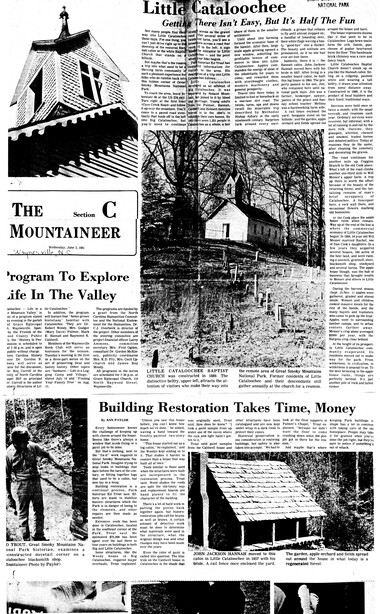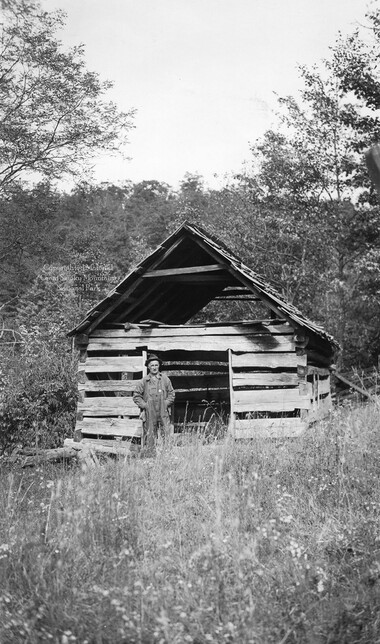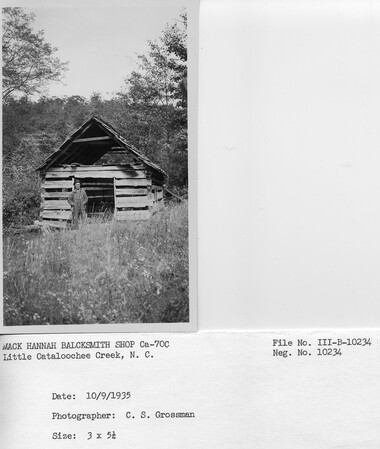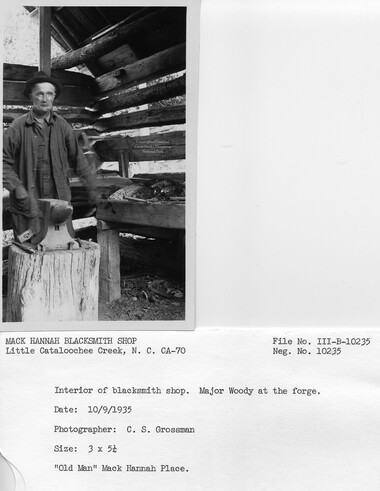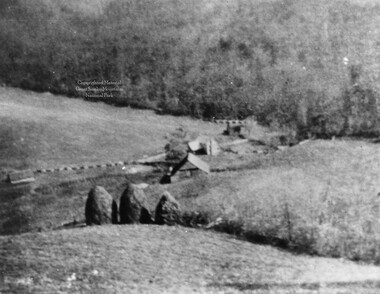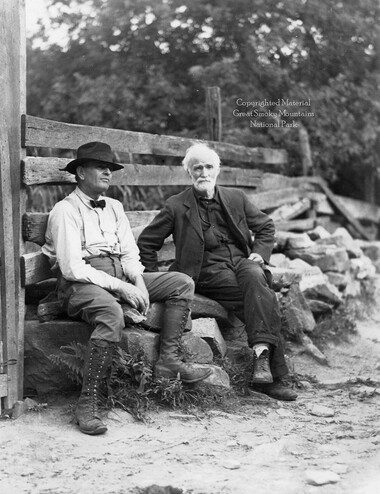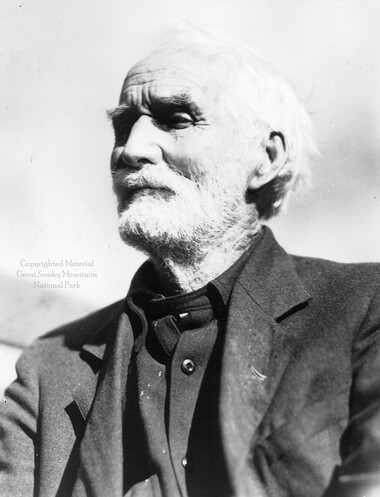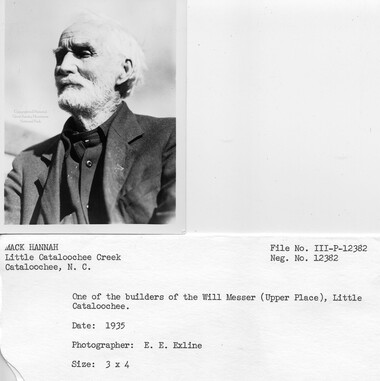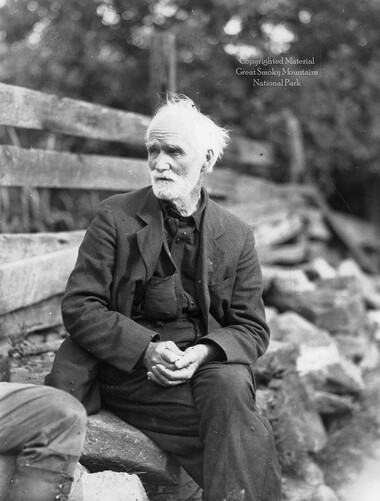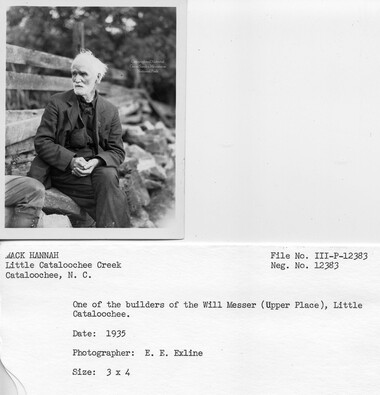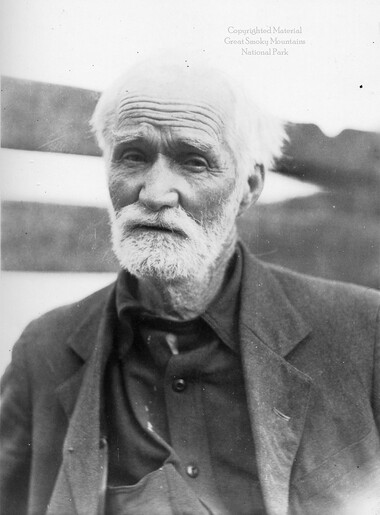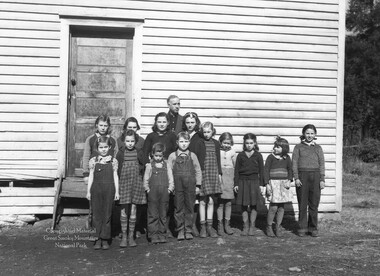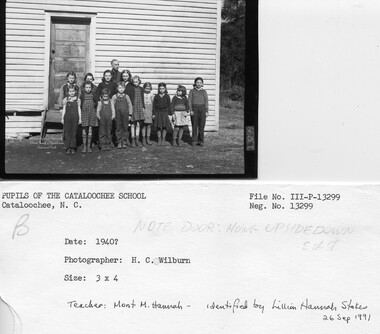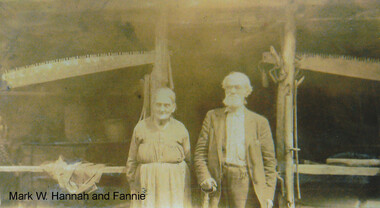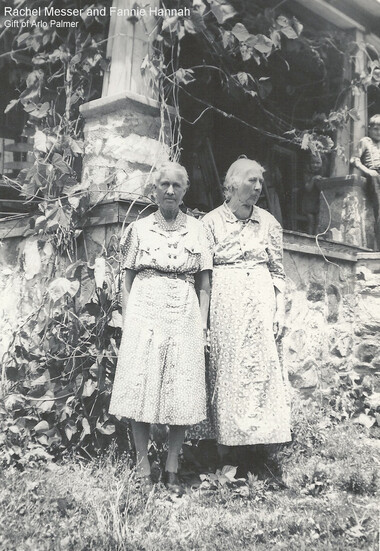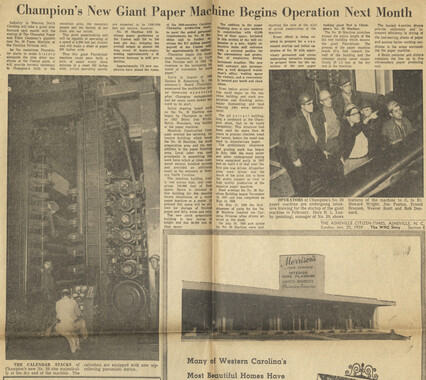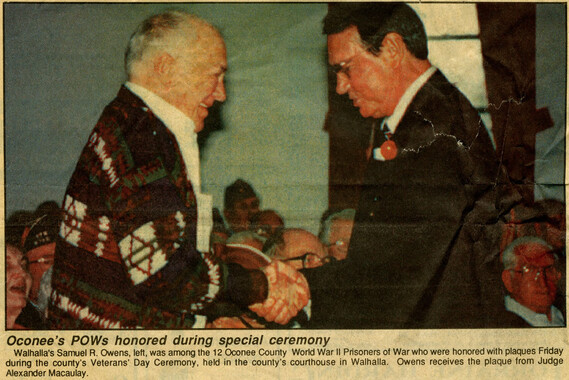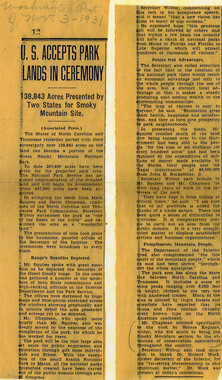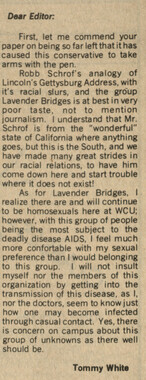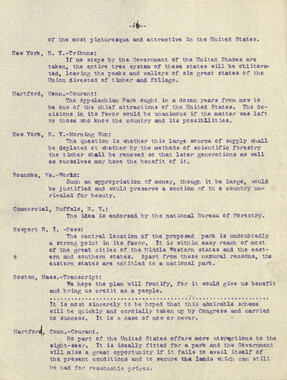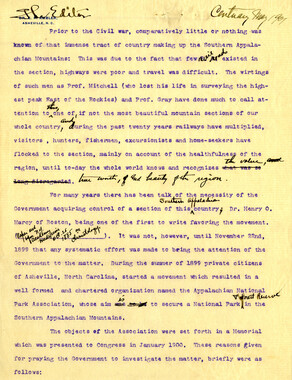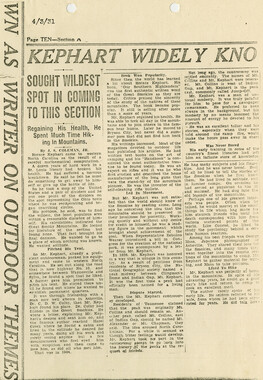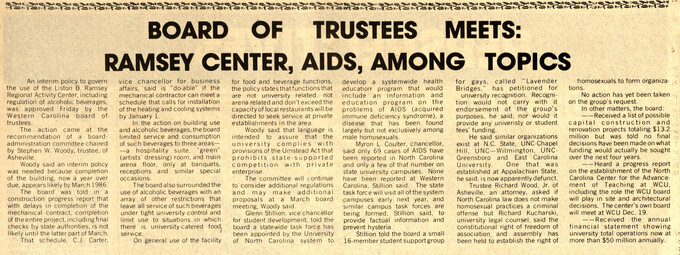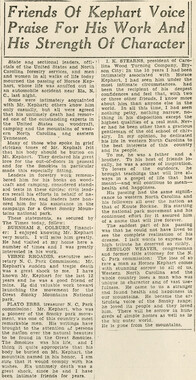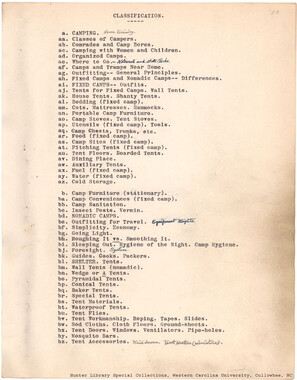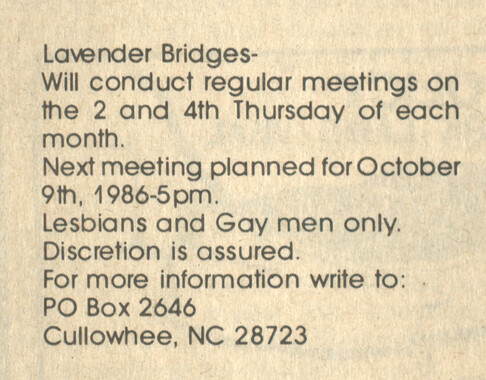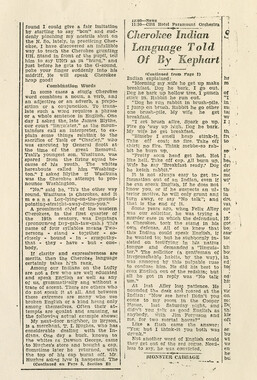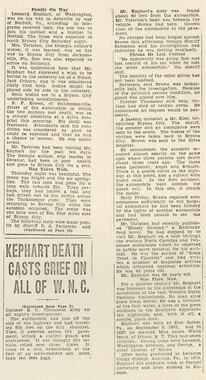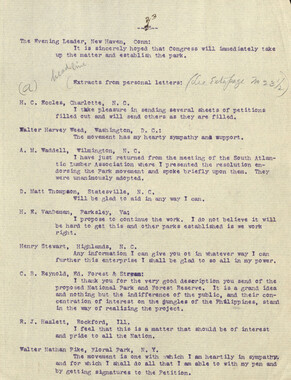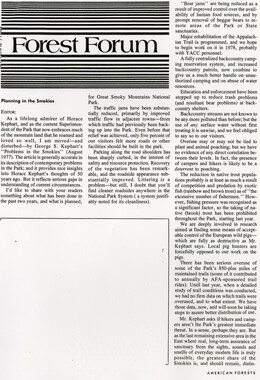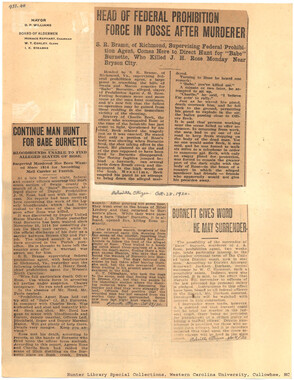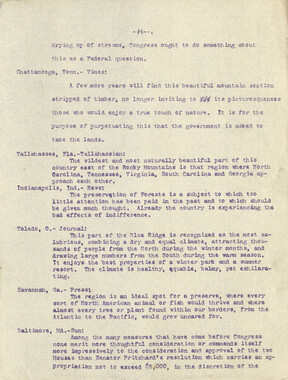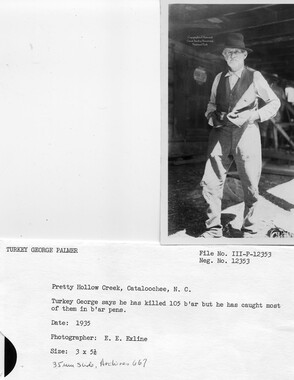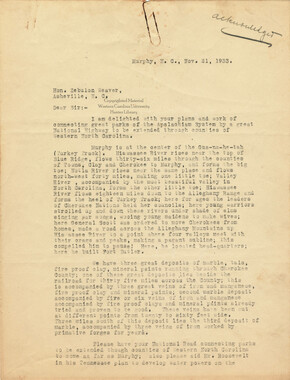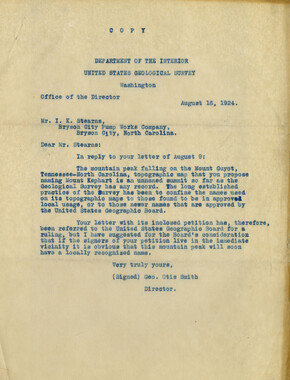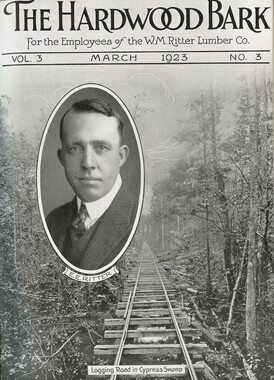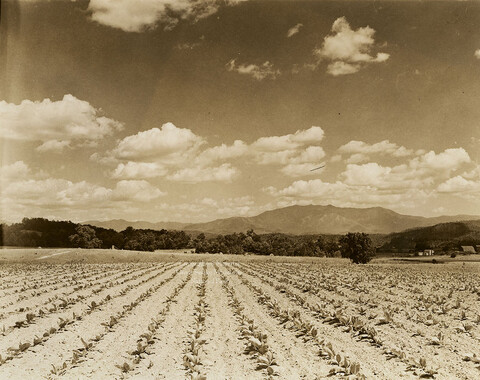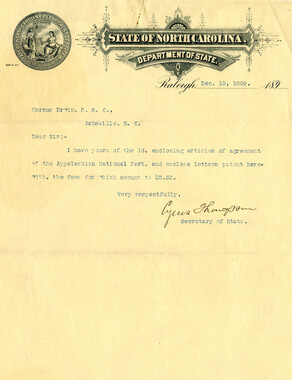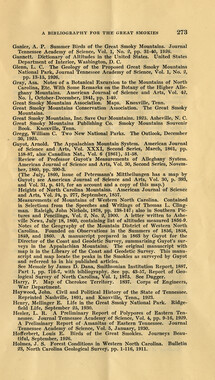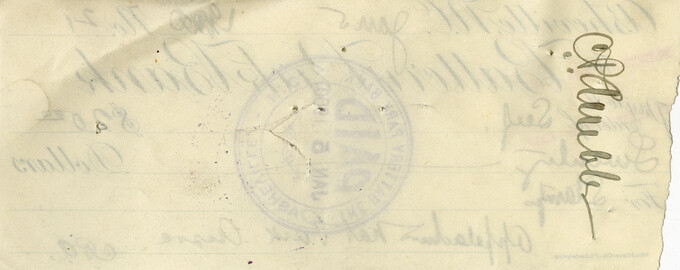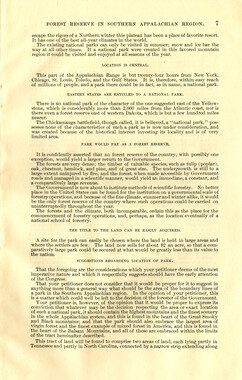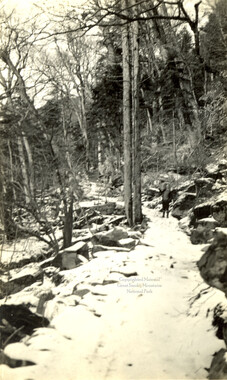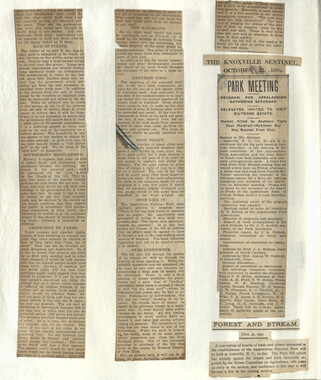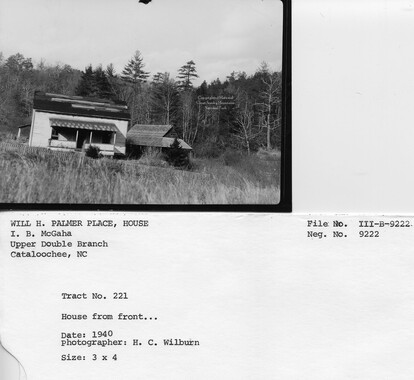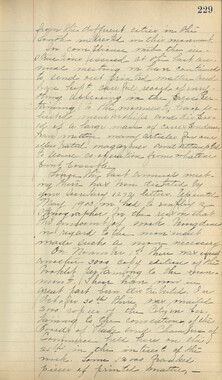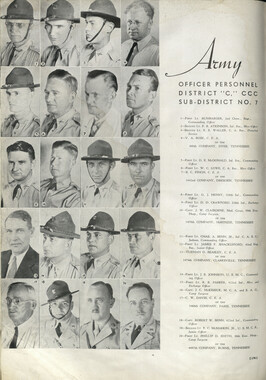Western Carolina University (20)
View all
- Canton Champion Fibre Company (2308)
- Cherokee Traditions (293)
- Civil War in Southern Appalachia (165)
- Craft Revival (1942)
- Great Smoky Mountains - A Park for America (2683)
- Highlights from Western Carolina University (430)
- Horace Kephart (941)
- Journeys Through Jackson (154)
- LGBTQIA+ Archive of Jackson County (15)
- Oral Histories of Western North Carolina (314)
- Picturing Appalachia (6679)
- Stories of Mountain Folk (413)
- Travel Western North Carolina (160)
- Western Carolina University Fine Art Museum Vitreograph Collection (129)
- Western Carolina University Herbarium (92)
- Western Carolina University: Making Memories (708)
- Western Carolina University Publications (2283)
- Western Carolina University Restricted Electronic Theses and Dissertations (146)
- Western North Carolina Regional Maps (71)
- World War II in Southern Appalachia (131)
University of North Carolina Asheville (6)
View all
- Allanstand Cottage Industries (62)
- Appalachian National Park Association (53)
- Bennett, Kelly, 1890-1974 (1295)
- Berry, Walter (76)
- Brasstown Carvers (40)
- Carver, George Washington, 1864?-1943 (26)
- Cathey, Joseph, 1803-1874 (1)
- Champion Fibre Company (233)
- Champion Paper and Fibre Company (297)
- Cherokee Indian Fair Association (16)
- Cherokee Language Program (22)
- Crowe, Amanda (40)
- Edmonston, Thomas Benton, 1842-1907 (7)
- Ensley, A. L. (Abraham Lincoln), 1865-1948 (275)
- Fromer, Irving Rhodes, 1913-1994 (70)
- George Butz (BFS 1907) (46)
- Goodrich, Frances Louisa (120)
- Grant, George Alexander, 1891-1964 (96)
- Heard, Marian Gladys (60)
- Kephart, Calvin, 1883-1969 (15)
- Kephart, Horace, 1862-1931 (313)
- Kephart, Laura, 1862-1954 (39)
- Laney, Gideon Thomas, 1889-1976 (439)
- Masa, George, 1881-1933 (61)
- McElhinney, William Julian, 1896-1953 (44)
- Niggli, Josephina, 1910-1983 (10)
- North Carolina Park Commission (105)
- Osborne, Kezia Stradley (9)
- Owens, Samuel Robert, 1918-1995 (11)
- Penland Weavers and Potters (36)
- Roberts, Vivienne (15)
- Roth, Albert, 1890-1974 (142)
- Schenck, Carl Alwin, 1868-1955 (1)
- Sherrill's Photography Studio (2565)
- Southern Highland Handicraft Guild (127)
- Southern Highlanders, Inc. (71)
- Stalcup, Jesse Bryson (46)
- Stearns, I. K. (213)
- Thompson, James Edward, 1880-1976 (226)
- United States. Indian Arts and Crafts Board (130)
- USFS (683)
- Vance, Zebulon Baird, 1830-1894 (1)
- Weaver, Zebulon, 1872-1948 (58)
- Western Carolina College (230)
- Western Carolina Teachers College (282)
- Western Carolina University (1794)
- Western Carolina University. Mountain Heritage Center (18)
- Whitman, Walt, 1819-1892 (10)
- Wilburn, Hiram Coleman, 1880-1967 (73)
- Williams, Isadora (3)
- Cain, Doreyl Ammons (0)
- Crittenden, Lorraine (0)
- Rhodes, Judy (0)
- Smith, Edward Clark (0)
- Appalachian Region, Southern (2393)
- Asheville (N.C.) (1886)
- Avery County (N.C.) (26)
- Blount County (Tenn.) (147)
- Buncombe County (N.C.) (1664)
- Cherokee County (N.C.) (283)
- Clay County (N.C.) (555)
- Graham County (N.C.) (233)
- Great Smoky Mountains National Park (N.C. and Tenn.) (478)
- Haywood County (N.C.) (3522)
- Henderson County (N.C.) (70)
- Jackson County (N.C.) (4692)
- Knox County (Tenn.) (21)
- Knoxville (Tenn.) (9)
- Lake Santeetlah (N.C.) (10)
- Macon County (N.C.) (420)
- Madison County (N.C.) (211)
- McDowell County (N.C.) (39)
- Mitchell County (N.C.) (132)
- Polk County (N.C.) (35)
- Qualla Boundary (981)
- Rutherford County (N.C.) (76)
- Swain County (N.C.) (2017)
- Transylvania County (N.C.) (247)
- Watauga County (N.C.) (12)
- Waynesville (N.C.) (68)
- Yancey County (N.C.) (72)
- Aerial Photographs (3)
- Aerial Views (60)
- Albums (books) (4)
- Articles (1)
- Artifacts (object Genre) (228)
- Biography (general Genre) (2)
- Cards (information Artifacts) (38)
- Clippings (information Artifacts) (191)
- Crafts (art Genres) (622)
- Depictions (visual Works) (21)
- Design Drawings (1)
- Drawings (visual Works) (184)
- Envelopes (73)
- Facsimiles (reproductions) (1)
- Fiction (general Genre) (4)
- Financial Records (12)
- Fliers (printed Matter) (67)
- Glass Plate Negatives (381)
- Guidebooks (2)
- Internegatives (10)
- Interviews (811)
- Land Surveys (102)
- Letters (correspondence) (1013)
- Manuscripts (documents) (619)
- Maps (documents) (159)
- Memorandums (25)
- Minutes (administrative Records) (59)
- Negatives (photographs) (5651)
- Newsletters (1285)
- Newspapers (2)
- Occupation Currency (1)
- Paintings (visual Works) (1)
- Pen And Ink Drawings (1)
- Periodicals (193)
- Personal Narratives (7)
- Photographs (12982)
- Plans (maps) (1)
- Poetry (5)
- Portraits (1654)
- Postcards (329)
- Programs (documents) (151)
- Publications (documents) (2237)
- Questionnaires (65)
- Scrapbooks (282)
- Sheet Music (1)
- Slides (photographs) (402)
- Sound Recordings (796)
- Specimens (92)
- Speeches (documents) (15)
- Tintypes (photographs) (8)
- Transcripts (322)
- Video Recordings (physical Artifacts) (23)
- Vitreographs (129)
- Text Messages (0)
- A.L. Ensley Collection (275)
- Appalachian Industrial School Records (7)
- Appalachian National Park Association Records (336)
- Axley-Meroney Collection (2)
- Bayard Wootten Photograph Collection (20)
- Bethel Rural Community Organization Collection (7)
- Blumer Collection (5)
- C.W. Slagle Collection (20)
- Canton Area Historical Museum (2110)
- Carlos C. Campbell Collection (198)
- Cataloochee History Project (65)
- Cherokee Studies Collection (4)
- Daisy Dame Photograph Album (5)
- Daniel Boone VI Collection (1)
- Doris Ulmann Photograph Collection (112)
- Elizabeth H. Lasley Collection (1)
- Elizabeth Woolworth Szold Fleharty Collection (4)
- Frank Fry Collection (95)
- George Masa Collection (173)
- Gideon Laney Collection (452)
- Hazel Scarborough Collection (2)
- Hiram C. Wilburn Papers (28)
- Historic Photographs Collection (236)
- Horace Kephart Collection (861)
- Humbard Collection (33)
- Hunter and Weaver Families Collection (1)
- I. D. Blumenthal Collection (4)
- Isadora Williams Collection (4)
- Jesse Bryson Stalcup Collection (47)
- Jim Thompson Collection (224)
- John B. Battle Collection (7)
- John C. Campbell Folk School Records (80)
- John Parris Collection (6)
- Judaculla Rock project (2)
- Kelly Bennett Collection (1314)
- Love Family Papers (11)
- Major Wiley Parris Civil War Letters (3)
- Map Collection (12)
- McFee-Misemer Civil War Letters (34)
- Mountain Heritage Center Collection (4)
- Norburn - Robertson - Thomson Families Collection (44)
- Pauline Hood Collection (7)
- Pre-Guild Collection (2)
- Qualla Arts and Crafts Mutual Collection (12)
- R.A. Romanes Collection (681)
- Rosser H. Taylor Collection (1)
- Samuel Robert Owens Collection (94)
- Sara Madison Collection (144)
- Sherrill Studio Photo Collection (2558)
- Smoky Mountains Hiking Club Collection (616)
- Stories of Mountain Folk - Radio Programs (374)
- The Reporter, Western Carolina University (510)
- Venoy and Elizabeth Reed Collection (16)
- WCU Gender and Sexuality Oral History Project (32)
- WCU Mountain Heritage Center Oral Histories (25)
- WCU Oral History Collection - Mountain People, Mountain Lives (71)
- WCU Students Newspapers Collection (1744)
- Western North Carolina Tomorrow Black Oral History Project (69)
- William Williams Stringfield Collection (2)
- Zebulon Weaver Collection (109)
- African Americans (388)
- Appalachian Trail (32)
- Artisans (521)
- Cherokee art (84)
- Cherokee artists -- North Carolina (10)
- Cherokee language (21)
- Cherokee pottery (101)
- Cherokee women (208)
- Church buildings (166)
- Civilian Conservation Corps (U.S.) (110)
- College student newspapers and periodicals (1830)
- Dams (94)
- Dance (1023)
- Education (222)
- Floods (60)
- Folk music (1015)
- Forced removal, 1813-1903 (2)
- Forest conservation (220)
- Forests and forestry (905)
- Gender nonconformity (4)
- Great Smoky Mountains National Park (N.C. and Tenn.) (154)
- Hunting (38)
- Landscape photography (10)
- Logging (103)
- Maps (84)
- Mines and mineral resources (8)
- North Carolina -- Maps (18)
- Paper industry (38)
- Postcards (255)
- Pottery (135)
- Railroad trains (69)
- Rural electrification -- North Carolina, Western (3)
- School integration -- Southern States (2)
- Segregation -- North Carolina, Western (5)
- Slavery (5)
- Sports (452)
- Storytelling (245)
- Waterfalls -- Great Smoky Mountains (N.C. and Tenn.) (66)
- Weaving -- Appalachian Region, Southern (280)
- Wood-carving -- Appalachian Region, Southern (328)
- World War, 1939-1945 (173)
Cataloochee tract 253: Mack W. Hannah
Item
Item’s are ‘child’ level descriptions to ‘parent’ objects, (e.g. one page of a whole book).
-
-
V* I lt>i i « vi NATIONAL PARK The Section C Mountaineer Wednesday, June 3, 1981 'rogram To Explore .ife In The Valley taloochee — Life in a :e Mountain Valley" is pic of a program slated ay evening in the parish of Grace Episcopal h, Waynesville. Spon- by the Friends of the ood County Public •y, the "History Is Peo- ;ession is scheduled to at 7:30 p.m. and is open public without charge, tern Carolina History ssor Dr. Gordon B. nney will serve as 'ator for the discussion, Dr. Roy Carroll of the rsity of^North Carolina iapel Hill as principal er. Carroll is the author istoric.Structures of Lit- f .1 tie Cataloochee." In addition, the program will feature four "home grown historians" familiar with Cataloochee. They are Dr. Robert Woody, Mrs. Gudger (Mary Davis) Palmer, Mark E. Hannah and Raymond K. Caldwell. Members of the Waynesville Book Club will serve as hostesses for the session. Tuesday's meeting is the first in a three-part series on the art of preserving local and family history. Other topics are "Sunburst — Life in a Logging Camp and Village," slated July 14 and "Finding Your Family Tree" on Aug. 11. The programs are funded by a grant from the North Carolina Humanities Committee and the National Endowment for the Humanities. Dr. C.J. Overbeck is director of the project. Other members of the steering committee are project financial officer Larry Ammons, committee secretary Mrs. Fred Ogden, consultant Dr. Gordon McKin- ney, publicity coordinator Mrs. K.D. Fry, Mrs. Cecil Up- church and James Roy Moody. All programs in the series are scheduled for 7:30 p.m. at Grace Episcopal Church, 110 North Haywood Street, Waynesville. Gettiie "here Isn't Easy, But Its Half The Fun Not many people find tkedp straigl1 across on the grave! way into Little Catalooche^ road, fter several miles of these days. For one thing, yotf twists md turns, you'll see a cant just drive right up to th'f brown ^ate across a road that doorstep of the restored Hai#>«3t )f{ to the left. A sign nah cabin or the white Bapt:*?*;?^* he entrance to Little Church that stands on a taK •cnee - and the point mllside. ' where ?our hike begins. But maybe that's the reason; Pal* historian Ed Trout Has a trip into what used to be C compiled information for thriving farm community is" ■ - " to the area. His such a pleasant experience f <* 1 «m ion of a trip into Little folks who do ramble back intra Catatebchee follows: this hidden corner of Greats Little Cataloochee Smoky Mountains NationaK de'elofed as an offshoot of Park- 1 Big Cataloochee. It was To reach the area, leave In-'-separated by Noland Moun- terstate 40 at the US 276 ex . in, bit joined to it by blood Turn right at the first n * '. m.rriage. Young adults (Cove Creek Road) and fallow'^3'Gih the Palmer, Hannah, it up over the mountain. You'll CaldwH and Bennett families come to a paved road even- £ moved in in the 1850's to tually that leads off to the left' estehjfeh their own homes. By into Big Cataloochee, but ,*' t re were 1,251 people in you'll need to continue ;CataloOchee as a whole, a fair share of them in the smaller settlement. Until about 1910 farming formed the economic base of the hamlet. After then, large scale apple growing opened a new window, admitting the profitable breeze of commerce to blow into Little Cataloochee. Apples commanded the energy of most of the inhabitants for years to come, and rewarded them with storebought clothes, modern machinery and general prosperity. Travel into there today is limited to foot or horseback on a one-lane dirt road. The twists, turns, ups and downs i recall the miserable trip described by Methodist Bishop Asbury in the early nineteenth century. Surprises lurk around every swit chback: a grouse that refuses to,fly until almost stepped on; a handful of bounding deer, their white flags waving a hasty "good-bye" into a thicket. The beauty and solitude are pronounced, as if no one had ever set foot there. Suddenly, there it is — the Hannah cabin. John Jackson Hannah moved here with his bride in 1857. After living in a smaller board cabin, he built this log house in 1864. The property passed to his son, Jim, who remained here until national park days. Jim was a farmer, beekeeper, sawyer, justice of the peace and Sunday school teacher. Melissa was a hardworking farm wife. A rail fence enclosed the yard; beegums stood on the hillside; and the garden, apple orchard and fields spread out LITTLE CATALOOCHEE BAPTIST CHURCH was constructed in 1889. The distinctive belfry, upper left, attracts the attention of visitors who make their way into the remote area of Great Smoky Mountains National Park. Former residents of Little Cataloochee and their descendants still gather annually at the church for a reunion. around the house and barn. The house represents dozens like it that used to be in Cataloochee. Logs hewn onsite form the crib. Inside, puncheons of poplar heartwood form the floor. This handmade brick chimney was a rare and fancy touch. Little Cataloochee Baptist Church doesn't sneak up on you like the Hannah cabin. Sitting on a ridgetop, painted white and wearing a tall belfry, it draws your attention from some distance away. Constructed in 1889, it is the product of local builders and their fixed, traditional ways. Services were held once or twice a month, with the usual revivals and reunions each year. Ordinary services were . reverent, but informal, with a lot of running in and out by the men folk. Outside, they gossiped, whittled, chewed and smoked, traded horses and debated politics. Today at reunions they do the same, after cleaning the cemetery and decorating the graves. The road continues for another mile up Coggins Branch to the old Cook place. What's left of the road climbs another one-third mile to Will Messer's upper farm. A trip up there is worth the effort because of the beauty of the returning forest, and the tantalizing remains of man's brief occupancy of Cataloochee. A fencepost here, a rock wall there, and occasional flowers marking old homesites. At the Cook place the apple house ruins alone remain. Way up at the end of the line is where the commercial economy of Little Cataloochee began. In 1894,24 year old Will Messer married Rachel, one of Dan Cook's daughters. In a few years they acquired several houses, 340 acres of the best land, and were running a sawmill, gristmill, store, blacksmith shop, stockyard and several farms. The apple house though, was the hub of business that brought wealth to Messer and others in Little Cataloocnee. During the harvest season (Sept. 15-Nov. 1) apples were gathered, graded and stored inside. Women and children cooked massive meals for the rest of the hands, and the many buyers and teamsters who came to pick up the fruit. Apples went to surrounding lumber camps, and to urban centers farther away. Messer's crop alone averaged $2000 per year, with the Burgess crop close behind. At the height of its prosperity Little Cataloochee community evaporated. Its residents moved out to make way for the park. From wilderness, to civilization, to wilderness is unusual to us. To the deer browsing in the apple house ruins, things are perfectly normal. It's just another pile of rock and fallen timber. Building Restoration Takes Time, Money D TROUT, Great Smoky Mountains Na- onal Park historian, examines a sconstructed dovetail corner on a italoochee blacksmith shop, lountaineer Photo by Paylor) By ANN PAYLOR Every homeowner knows the challenge of keeping up with chores around the house. Seems like there's always a window that needs fixing or a paint job to be done. But that's nothing, next to the "fix-it" work required in Great Smoky Mountains National Park. Imagine trying to stop leaks in buildings that date before the turn of the century, or fitting together logs that used to be a cabin, but now lay in a heap. Building restoration is a continual process, Park historian Ed Trout said. Efforts are made to stabilize historic structures which the Park is in danger of losing to the elements, and other repairs are then made as needed. Extensive work has been done in Cataloochee, located in the southeast corner of the Park, Trout said. He estimated $75,000 has been spent over the last three to four years on buildings in both Big and Little Cataloochee. Some structures, like the Woody house in Big Cataloochee, required major overhauls, Trout explained. "Unless you saw this house before, you can't know how much we've done," he added, waving a hand toward the freshly-painted two-story home. "This house started out as a log cabin," he explained, "and the Woodys kept adding on to it. That makes it harder to restore than a house that was built all at once." Tools similar to those used when the structures were built are incorporated in the restoration process, Trout said. Wood shakes for roofs are split the old-timey way and replacement boards are hand planed to fit the character of the building. There's a lot of hard work in putting the pieces back together again, but historic restoration jobs call for brains as well as brawn. A certain amount of detective work must be done to determine what materials were used in the structure, what the original design was and what changes may have been made over the years. Even the color of paint is called into question. The blue trim on the Caldwell house in Cataloochee is the shade that was originally used, Trout said. How does he know? "I took a paint sample from up under one of the eaves where the rain and light hadn't gotten to it." Trout said paint samples from the Caldwell house and other structures have been catalogued and are now kept under wrap in a dark room to protect their colors. Historical preservation is one consideration in restoring buildings, but safety is also taken into account. "We had to look at the floor supports in Palmer's Chapel," Trout explained, "because we didn't want the floor to come crashing down when 200 people got in there for the reunion." And maybe that's where keeping Park buildings ir. shape has a lot in commor. with taking care of the olc homeplace. People may take it for granted when you've done the job right, but they're sure to notice if something's out of whack. JOHN JACKSON HANNAH moved to this cabin in Little Cataloochee in 1857 with his bride. A rail fence once enclosed the yard. The garden, apple orchard and fields spread out around the house in what today is a regenerated forest. ;•?-;$■ ■> ■ *■ - --•
Object
Object’s are ‘parent’ level descriptions to ‘children’ items, (e.g. a book with pages).
-
This 152-acre tract 253 in Cataloochee was owned by Mack. W. Hannah. While, in general, the Great Smoky Mountains region was sparsely populated, the Cataloochee Valley remained an exception. By 1900, the population of Cataloochee had grown to 1,000 residents living in hundreds of log and frame homes. A few historic buildings have been preserved on site, including two churches, a school, several homes, and outbuildings. The North Carolina Park Commission was tasked with purchasing land for the Great Smoky Mountains National Park and people living in Cataloochee were among those displaced. Cataloochee families continue to return for annual reunions. In 2001, the National Park Service re-introduced elk into the valley.
-
